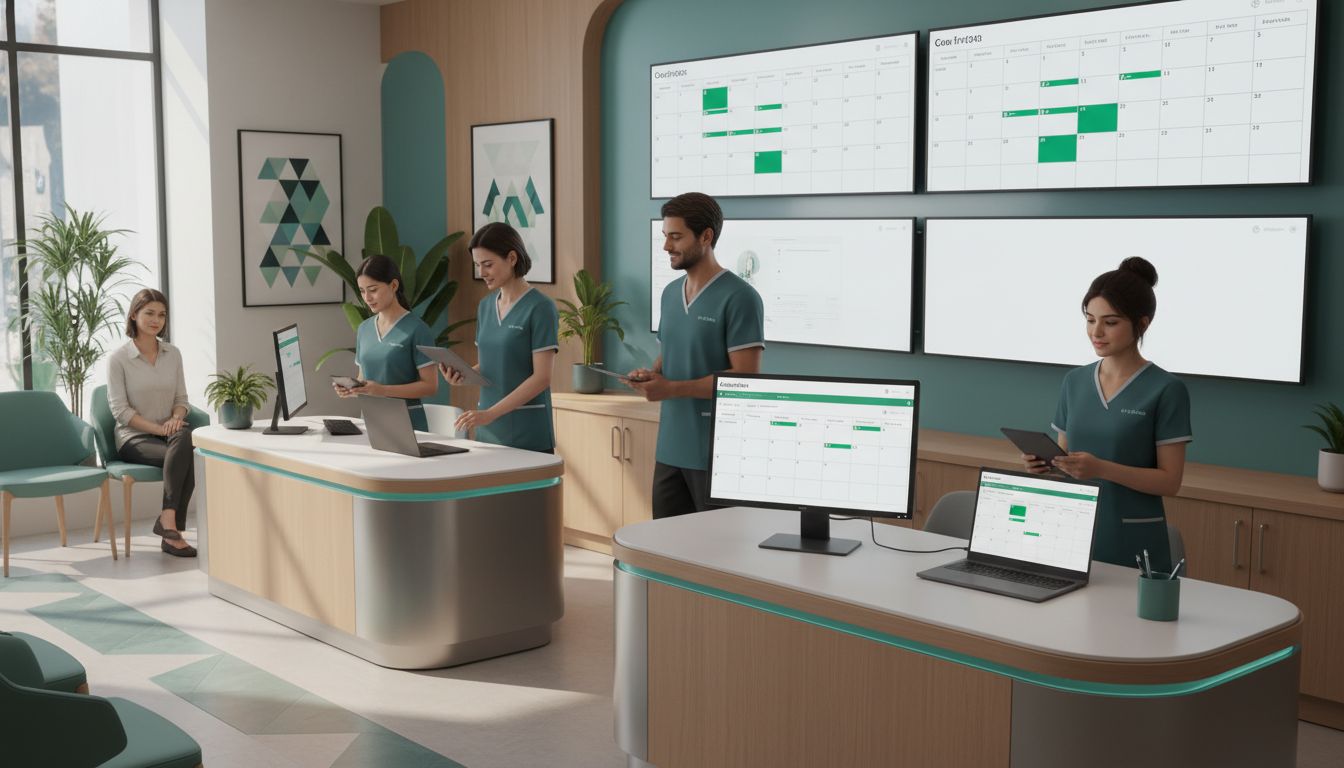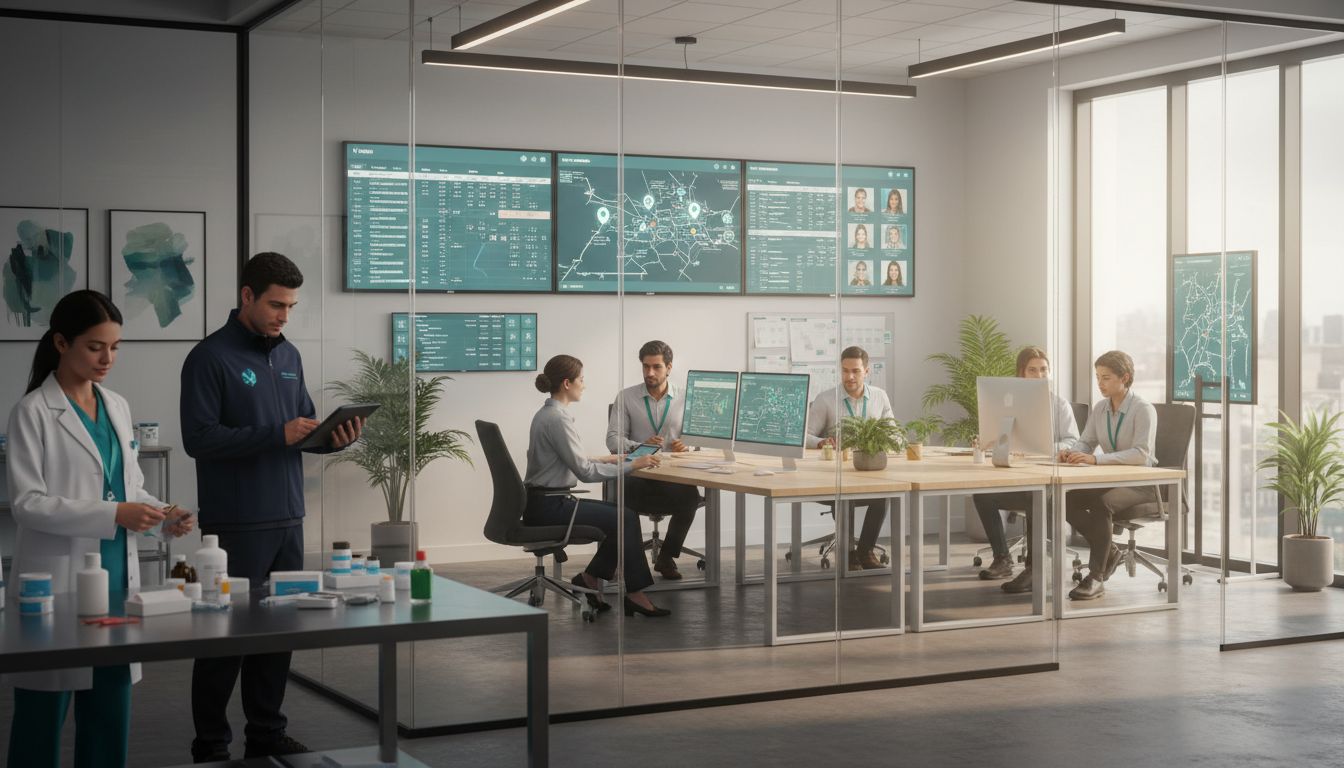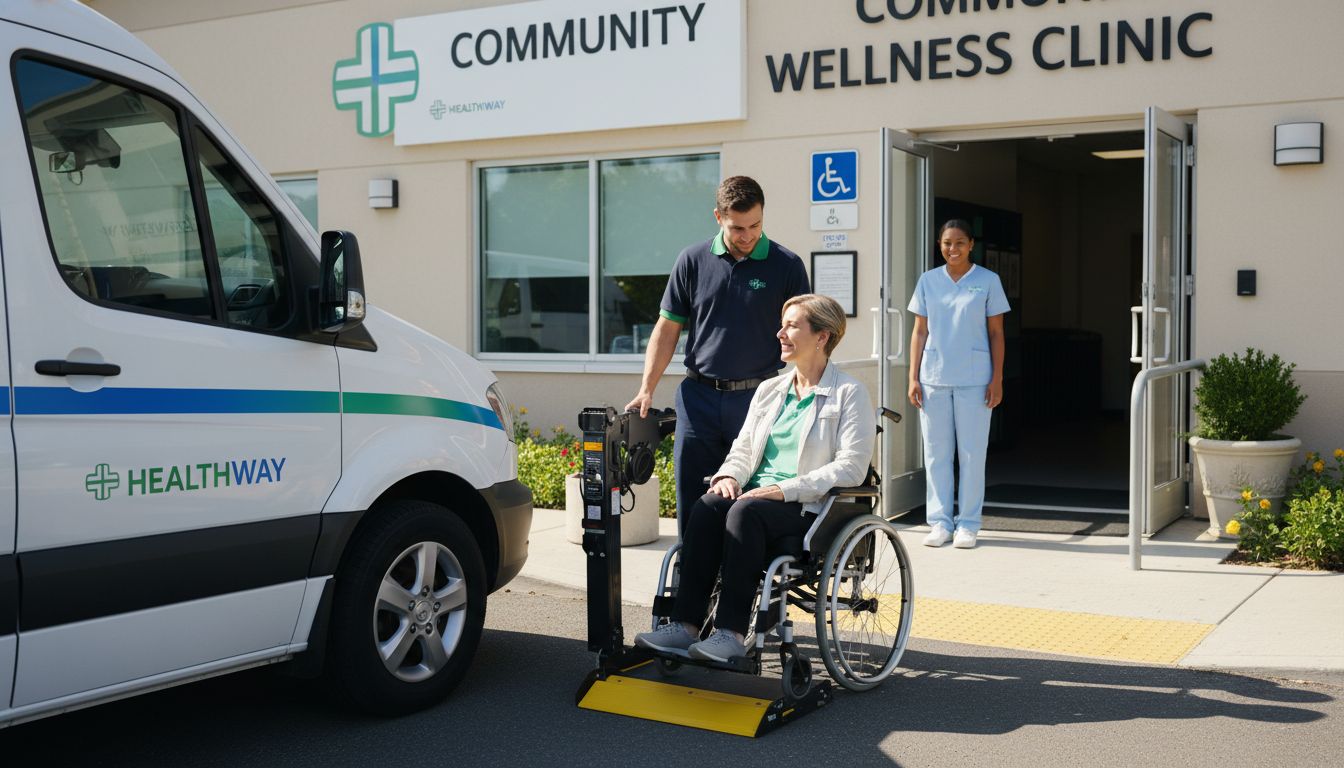Secure Healthcare Communication Solutions for 2025 Providers
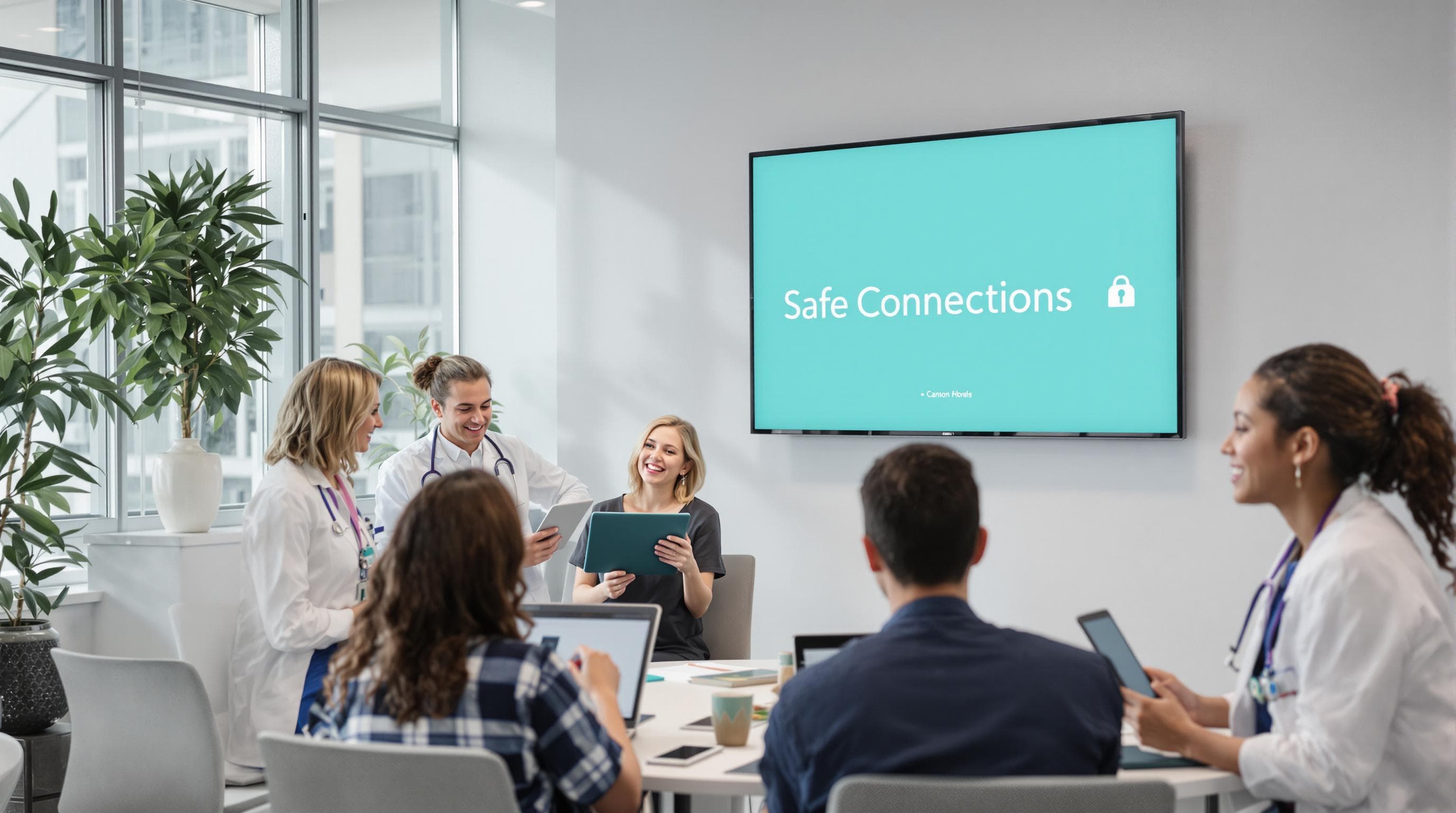
Healthcare teams share massive amounts of sensitive information every single day. Up to 80 percent of serious medical errors happen because of miscommunication between providers, not just technical mistakes. That sounds shocking, right? The real surprise is that the most promising fixes for these deadly gaps are not just about tougher regulations. Bold new digital tools are actually redefining how doctors, nurses, and patients connect—making communication more secure and effective than ever before.
Table of Contents
- Why Secure Healthcare Communication Matters
- Key Technologies For Safe Medical Messaging
- Compliance And Data Security In 2025
- Best Practices For Healthcare Teams And Agencies
Quick Summary
| Takeaway | Explanation |
|---|---|
| Secure communication is vital for patient safety | Ineffective communication can lead to serious medical errors, indicating the need for secure channels that protect sensitive information. |
| Adopt advanced encryption technologies | Utilizing 256-bit encryption and other security measures is essential for safeguarding patient data from cyber threats in healthcare messaging. |
| Implement interoperable messaging platforms | Interoperability allows for seamless data exchange across healthcare systems, improving care coordination and efficiency among providers. |
| Create inclusive and accessible communication strategies | Developing messaging that reflects diverse patient perspectives and capabilities enhances understanding and trust in healthcare communication. |
| Prioritize continuous training for healthcare teams | Ongoing training ensures teams remain informed about new technologies and secure messaging protocols, fostering effective and safe communication practices. |
Why Secure Healthcare Communication Matters
Healthcare communication represents a critical lifeline for patient safety and operational efficiency. The complexity of modern medical systems demands robust, secure communication channels that protect sensitive patient information while enabling rapid, accurate information exchange among healthcare professionals.
The High Stakes of Communication Failures
The consequences of ineffective communication in healthcare are profound and potentially life-threatening. Research from the Joint Commission reveals that up to 80% of serious medical errors result from miscommunication between healthcare providers. This staggering statistic underscores the urgent need for secure, reliable communication solutions that can bridge critical information gaps.
Healthcare organizations face multiple communication challenges. Patient data must be transmitted securely across various systems and professionals, including physicians, nurses, specialists, and administrative staff. Each communication point represents a potential vulnerability where patient privacy could be compromised or critical medical information could be misinterpreted.
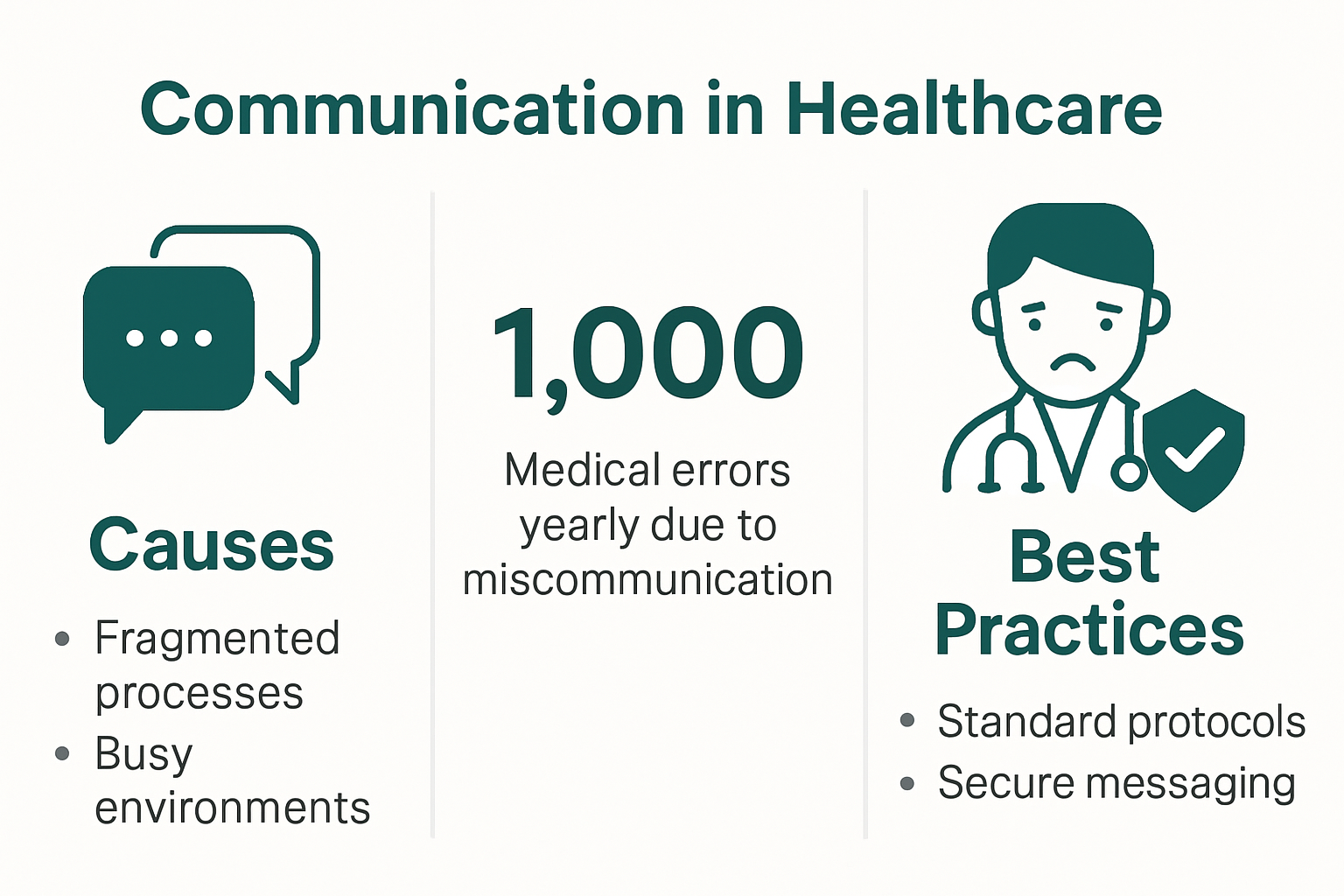
Technological Solutions for Secure Interactions
A comprehensive study from the National Institutes of Health demonstrated that implementing secure electronic messaging systems significantly improves provider-to-provider communication. These advanced systems go beyond traditional communication methods by offering:
- Encrypted Messaging: Protecting patient information from unauthorized access
- Real-Time Updates: Enabling immediate communication across different healthcare settings
- Compliance Tracking: Ensuring all communications meet strict healthcare privacy regulations
The COVID-19 pandemic dramatically accelerated the need for touchless, secure communication technologies. Healthcare providers discovered that robust digital communication platforms could maintain patient care quality while minimizing physical contact and potential virus transmission.
Building a Culture of Secure Communication
Secure healthcare communication is more than just a technological solution. It represents a fundamental shift in how medical professionals approach information sharing. By implementing comprehensive secure communication strategies, healthcare organizations can:
- Reduce medical errors
- Protect patient privacy
- Improve overall care coordination
- Enhance operational efficiency
Healthcare professionals must view secure communication as a critical component of patient care. Each message, each shared piece of information, carries potential implications for patient outcomes. The right communication tools transform these interactions from potential risks into opportunities for precise, compassionate healthcare delivery.
As technology continues to evolve, secure healthcare communication will become increasingly sophisticated. Artificial intelligence, advanced encryption methods, and integrated communication platforms will further strengthen the ways medical professionals connect, collaborate, and care for patients.
Key Technologies for Safe Medical Messaging
Modern healthcare demands sophisticated technologies that can guarantee secure, efficient, and compliant medical communication. The rapid evolution of digital platforms has transformed how medical professionals exchange critical patient information, creating robust solutions that protect sensitive data while enabling seamless collaboration.
Advanced Encryption and Security Protocols
Research from Stanford Hospital and Clinics highlights the critical importance of robust encryption in medical messaging. Advanced security technologies now offer 256-bit encryption standards, providing unprecedented protection for sensitive patient data. These sophisticated protocols ensure that every communication remains confidential and protected from potential cyber threats.
Healthcare communication technologies now integrate multiple layers of security. Biometric authentication, multi-factor verification, and intelligent access controls prevent unauthorized personnel from accessing critical medical information. These technologies go beyond traditional password protections, creating dynamic security environments that adapt to emerging digital risks.
Interoperable Messaging Platforms
The FHIRChain architecture represents a groundbreaking approach to secure medical data exchange. By combining blockchain technology with the HL7 FHIR standard, these platforms enable healthcare providers to share clinical data securely and efficiently across different systems. This interoperability eliminates communication barriers that traditionally fragmented patient care.
Interoperable messaging platforms offer several key advantages:
- Seamless Data Integration: Connecting disparate healthcare information systems
- Real-Time Information Sharing: Enabling instant communication between providers
- Comprehensive Audit Trails: Tracking all data exchanges for compliance purposes

AI-Driven Communication Management
Innovative research from Grady Health System demonstrates how artificial intelligence is revolutionizing medical messaging. AI-powered communication platforms can now:
- Automatically prioritize urgent messages
- Detect potential communication risks
- Suggest optimal communication channels
- Ensure regulatory compliance in real-time
These intelligent systems learn from each interaction, continuously improving communication efficiency and security. By analyzing communication patterns, AI can identify potential bottlenecks, recommend workflow improvements, and reduce the risk of miscommunication.
As healthcare becomes increasingly digital, these technologies will play a crucial role in transforming how medical professionals collaborate. The future of medical messaging lies in creating intelligent, secure, and seamlessly integrated communication ecosystems that prioritize patient safety and operational excellence.
Below is a table summarizing and comparing the key technologies for secure healthcare communication discussed in this section.
| Technology | Core Features | Primary Benefits |
|---|---|---|
| Advanced Encryption & Security | 256-bit encryption, biometric & multi-factor authentication | Strong data privacy, threat protection |
| Interoperable Messaging Platforms | Blockchain, HL7 FHIR compatibility, audit trails | Seamless data exchange, compliance |
| AI-Driven Communication Management | Urgency detection, risk analysis, compliance automation | Efficiency, reduced errors, adaptability |
Compliance and Data Security in 2025
As healthcare technology continues to evolve, 2025 marks a pivotal year for regulatory frameworks and data security standards. Healthcare providers face increasingly complex challenges in maintaining patient privacy, securing electronic health information, and meeting stringent regulatory requirements.
Emerging Regulatory Landscape
The U.S. Department of Health and Human Services has proposed groundbreaking regulations that fundamentally reshape healthcare data protection. These new guidelines mandate comprehensive cybersecurity measures, including:
- Mandatory Annual Technical Inventories: Ensuring continuous assessment of digital infrastructure
- Enhanced Vendor Oversight: Requiring business associates to provide rapid incident notifications
- Multi-Factor Authentication: Implementing robust access control mechanisms
Healthcare organizations must now develop more sophisticated approaches to data security. The proposed regulations emphasize proactive risk management, moving beyond traditional compliance checklists to create dynamic, responsive security ecosystems.
Public Health Data Strategy
The CDC’s Public Health Data Strategy introduces critical frameworks for data interoperability and sharing. Key priorities include developing common standards that facilitate seamless data exchange across different healthcare systems. This approach addresses long-standing challenges in healthcare communication by establishing:
- Standardized data exchange protocols
- Common legal agreements for data sharing
- Minimal data necessary (MDN) frameworks for public health responses
The strategy represents a significant shift towards more open and collaborative healthcare data management, recognizing the critical importance of efficient information sharing in modern healthcare.
Advanced Data Protection Standards
The National Institutes of Health has set new benchmarks for controlled-access data protection. These updated security standards emphasize:
- Comprehensive privacy protection policies
- Respect for individual and community data rights
- Secure transmission and storage methodologies
Healthcare providers must now implement more nuanced approaches to data security. This means going beyond traditional protection mechanisms to create holistic security environments that respect patient privacy while enabling critical medical research and care coordination.
The landscape of healthcare compliance in 2025 demands a proactive, intelligent approach to data security. Organizations must view compliance not as a box to check, but as a comprehensive strategy that protects patient information, supports medical innovation, and maintains the highest standards of care. Technology, regulatory frameworks, and ethical considerations must work in concert to create a secure, efficient healthcare communication ecosystem.
Best Practices for Healthcare Teams and Agencies
Healthcare communication requires a strategic, comprehensive approach that goes beyond traditional messaging protocols. Successful teams and agencies must develop robust communication strategies that prioritize patient safety, team collaboration, and operational efficiency.
Inclusive and Accessible Communication
Guidelines from the CDC emphasize the critical importance of creating communication strategies that are inclusive and accessible to diverse populations. Healthcare teams must intentionally design communication platforms that:
- Represent Diverse Perspectives: Develop messaging and visual content that reflects the demographic diversity of patient populations
- Ensure Accessibility: Create communication tools that accommodate different language abilities, technological literacy levels, and physical capabilities
- Promote Cultural Sensitivity: Develop communication approaches that respect varied cultural communication norms
Effective communication is not just about transmitting information. It requires a nuanced understanding of how different groups perceive, process, and respond to medical information. Teams must continuously evaluate and adapt their communication strategies to meet evolving patient needs.
Below is a checklist table outlining essential best practices for inclusive and accessible healthcare communication.
| Best Practice | Purpose | Status/Action |
|---|---|---|
| Represent diverse perspectives | Reflect all patient demographics | Develop tailored content |
| Ensure accessibility | Adapt to languages, literacy, abilities | Test with user groups |
| Promote cultural sensitivity | Respect varied norms and preferences | Ongoing staff training |
Cybersecurity and Patient Communication
The FDA’s best practices for cybersecurity communication provide critical guidance for healthcare agencies. Transparent, clear communication about potential digital risks is essential. Key strategies include:
- Making technical information easy to understand
- Clearly explaining potential risks and mitigation strategies
- Providing accessible resources for patients to learn about digital safety
- Creating communication channels that allow for ongoing dialogue about security concerns
Healthcare teams must transform complex technical information into digestible, actionable insights. This approach builds patient trust and empowers individuals to participate actively in their digital health protection.
Continuous Training and Adaptation
Successful healthcare communication requires ongoing professional development. Teams must invest in continuous training programs that:
- Update staff on the latest communication technologies
- Provide training in secure messaging protocols
- Develop skills in cross-team collaboration
- Foster a culture of open, transparent communication
The most effective healthcare teams view communication as a dynamic, evolving discipline. They recognize that technological advancements, changing patient expectations, and emerging regulatory requirements demand constant learning and adaptation.
In 2025, healthcare communication is about more than exchanging information. It represents a complex ecosystem of technological tools, human skills, regulatory compliance, and patient-centered approaches. Agencies that excel will be those that can seamlessly integrate advanced technologies with empathetic, inclusive communication strategies.
Frequently Asked Questions
What are secure healthcare communication solutions?
Secure healthcare communication solutions include digital tools and platforms that enable healthcare providers to share sensitive information safely and efficiently, minimizing the risk of miscommunication and protecting patient privacy.
Why is secure communication important in healthcare?
Secure communication is vital in healthcare because up to 80% of serious medical errors stem from miscommunication. Effective communication can improve patient safety, care coordination, and overall operational efficiency.
What technologies support secure communication in healthcare?
Key technologies for secure communication in healthcare include advanced encryption protocols, interoperable messaging platforms, and AI-driven communication management systems, all designed to protect patient data and facilitate seamless information exchange.
How can healthcare teams ensure compliance with communication regulations in 2025?
Healthcare teams can ensure compliance by staying informed about emerging regulations, implementing robust cybersecurity measures, conducting regular training, and adopting best practices for data protection, as outlined by health authorities and regulatory bodies.
Transform Healthcare Communication Into Patient-Centered Results
Is constant miscommunication, slow information exchange, or security worries holding your team back? The article “Secure Healthcare Communication Solutions for 2025 Providers” makes it clear that one weak link in communication can create serious risks, operational delays, and even impact patient safety. Providers today need more than just secure messaging. They need an integrated platform that solves the real logistics of healthcare—scheduling, transport, vendor management, and rapid response—all protected by advanced security and supported by real-time updates.
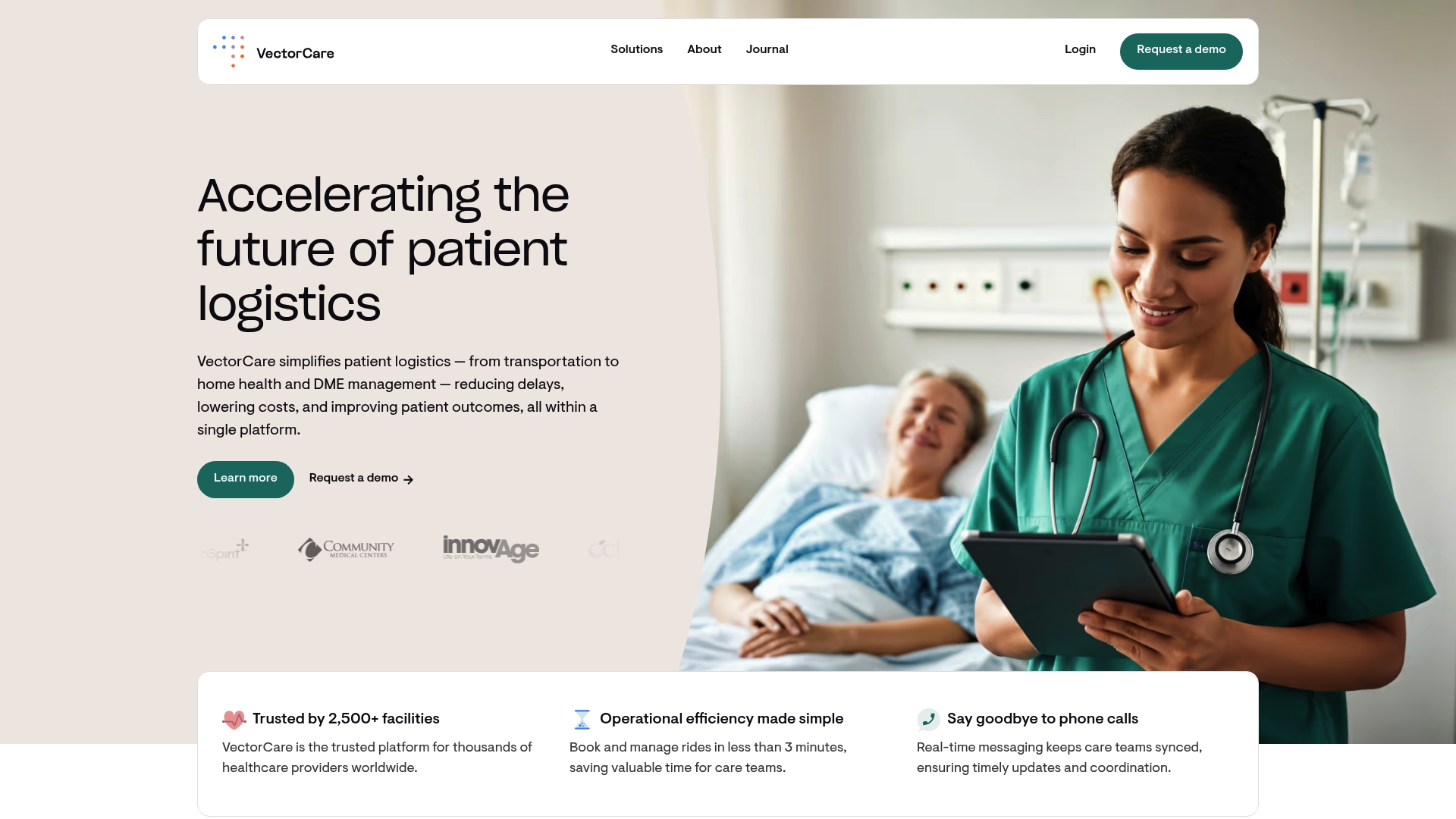
Ready to eliminate gaps and streamline every aspect of care coordination? See how VectorCare helps healthcare organizations upgrade to fully secure, automated communication and logistics that cut costs and prevent errors. Explore our secure, compliant digital platform that empowers you to build efficient workflows without code and manage all your patient logistics from one, trusted place. Take the next step towards a safer, smarter, and more coordinated future in healthcare by visiting our site today.
